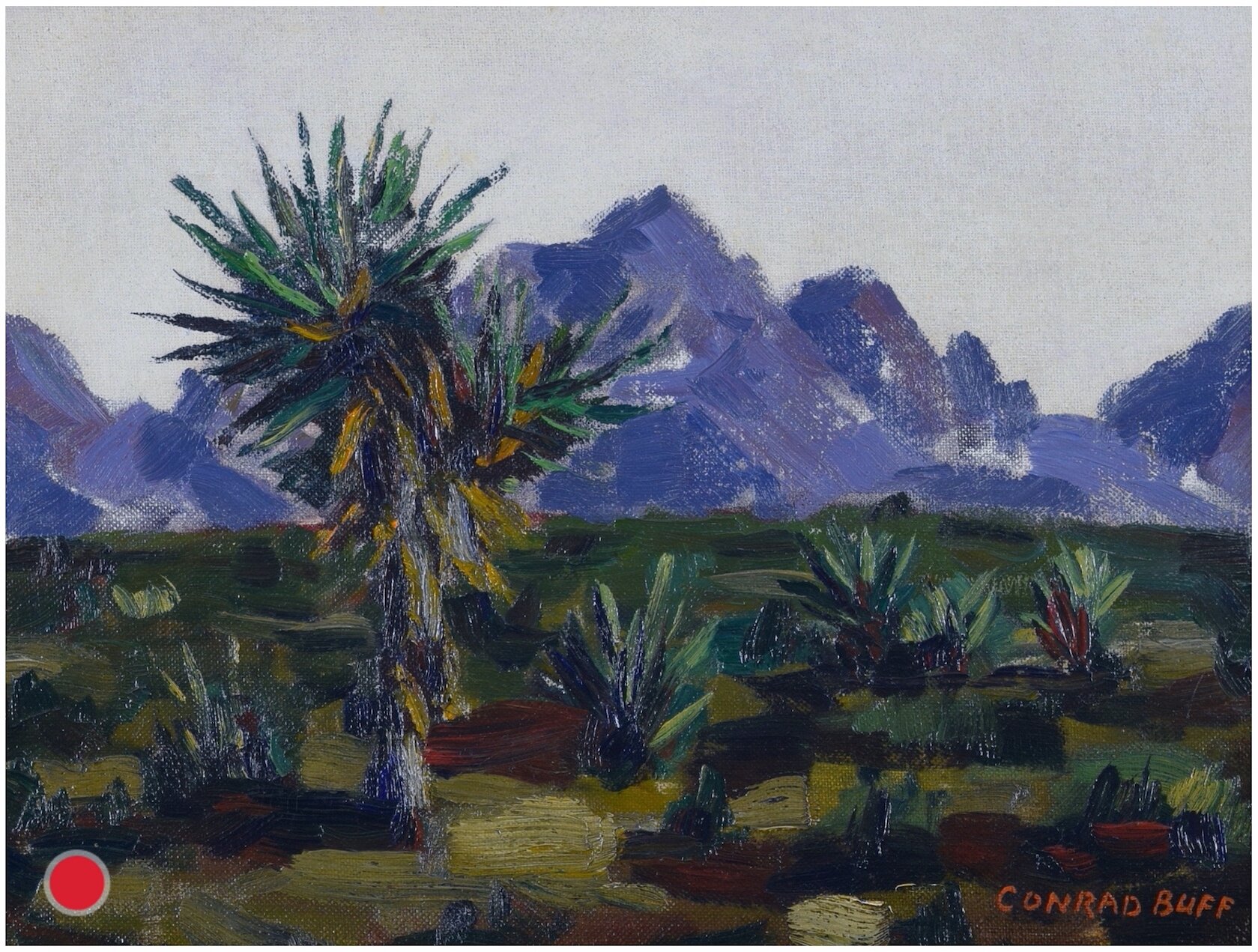Conrad Buff
Conrad Buff
“Hidden Hills” c.1930s
- Oil on artist board
- Board 9 x 12 in.
- Frame 16.5 x 19.5 in.
- Signed lower right
Click image to enlarge.
PRICE: Sold
About the work
The Granite Mountains in the Mojave National Preserve. The area is home to the Mojave Yucca, which stands prominently in the foreground of Buff’s painting.
The title of this work may refer to an area in the Mojave National Preserve known as the Hidden Hills Mining District. Among the area’s most notable features are craggy rock formations that form the Granite Mountains, whose shapes and shadows resemble those in the painting. Buff was familiar with the area, having first ventured through Mojave during a well-documented trip with fellow artist Franz Bischoff in 1917.
Note: The foreground of the painting is somewhat darker than it appears in our photos, which were taken under studio lighting.
About the artist…
Conrad Buff (1886-1975) never adhered to a specific, formal art school or movement. His inspiration came from a love of color, architectural planning, and curiously, house painting.
Buff’s personal style began to germinate in the early 1920s when he participated in a number of group shows, followed by his first solo exhibition at the Los Angeles museum. Work from the period shows Buff using larger canvases with small color dots in lines of defined shapes—or, a sort of pointillist style.
As the mid-1920s approached, Buff set out on the first of many painting excursions in the Southwest. Like his impression of the Sierras, Buff was awestruck by the expansive desert landscape and the overpowering geometric formations that he saw contrasted against a clear, blue sky. It wasn’t long before his work attracted the attention of the artist Maynard Dixon and the two quickly became friends.
Despite their difference in age, Dixon and Buff had much in common. They were muralists, traveled often to the Southwest, and worked separate from dominant trends in California art. Both looked for shapes and colors that brought attention to a landscape’s intensity and immensity. Buff and his wife Mary were regular visitors at Edith and Maynard Dixon’s small cabin in Mount Carmel, Utah, where they enjoyed spending time together and painting the magnificent local landscape.
Buff also spent time with other California painters, including Edgar Payne, Jack Wilkinson Smith, Elmer Wachtel, Frank Cuprien, and Mabel Alvarez.
Over time Buff gradually earned recognition as a leading painter of the day. As his work matured it became increasingly abstract. Where he had once emphasized basic shapes in the landscape, he later came to exaggerate them to create two-dimensional patterns, rendered in increasingly bright and simple colors. He eliminated details and instead painted with thicker brush strokes creating broad color bands and basic interlocking shapes.
Packaging and Shipping
We gladly provide shipping quotes upon request.
Sales tax
Items shipped or delivered to a Nevada address will include applicable sales tax on the purchase invoice.





